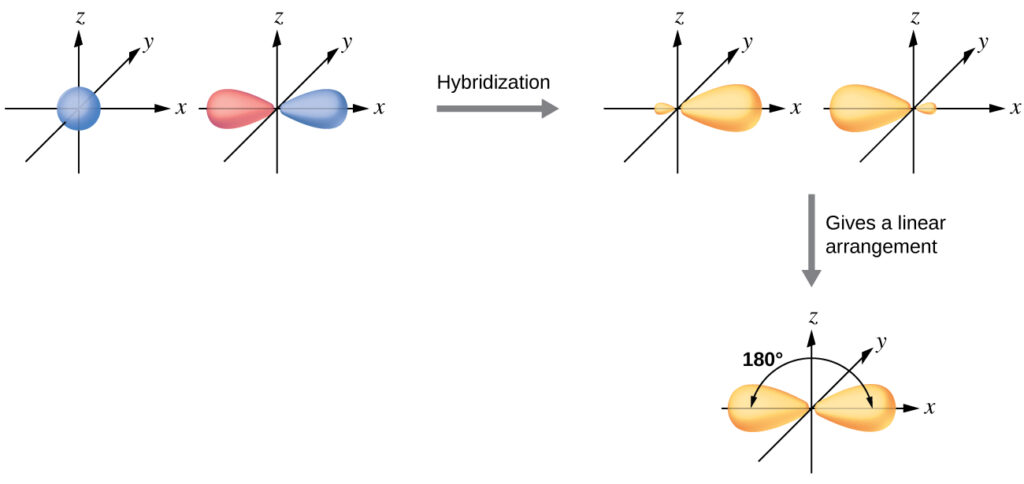The beryllium atom in a gaseous BeCl2 molecule is an example of a type of central atom. It has no lone pairs of electrons and forms a linear arrangement of three atoms. In this molecule, two regions of valence electron density correspond to the two covalent Be-Cl bonds. To accommodate these two electron domains, the Be atom’s four valence orbitals will mix. This mixing yields two hybrid orbitals.
This hybridization process combines the valence s orbital with one of the valence p orbitals. As a result, it yields two equivalent sp hybrid orbitals oriented in a linear geometry ([link]). While in the figure, the set of sp orbitals resemble the original p orbital, an important difference exists between them. The number of atomic orbitals combined always equals the number of hybrid orbitals formed.
The p orbital is one orbital that can hold up to two electrons. The sp set is two equivalent orbitals that point 180° from each other. The two electrons that were originally in the s orbital are now occupy the two sp orbitals, making them half filled. In gaseous BeCl2, these half-filled hybrid orbitals will overlap with orbitals from the chlorine atoms. This overlap forms two identical σ bonds.

We illustrate the electronic differences in an isolated Be atom and in the bonded Be atom in the orbital energy-level diagram below. These diagrams represent each orbital by a horizontal line (indicating its energy) and each electron by an arrow. Energy increases toward the top of the diagram. We use one upward arrow to indicate one electron in an orbital and two arrows (up and down) to indicate two electrons of opposite spin.

When atomic orbitals hybridize, the valence electrons occupy the newly created orbitals. The Be atom has two valence electrons, so each sp orbitals receives one of these electrons. Each of these electrons pairs up with the unpaired electron on a chlorine atom when a hybrid orbital and a chlorine orbital overlap during the formation of the Be–Cl bonds.
Any central atom surrounded by just two regions of valence electron density in a molecule will exhibit sp hybridization. Other examples include the mercury atom in the linear HgCl2 molecule, the zinc atom in Zn(CH3)2, which contains a linear C–Zn–C arrangement, and the carbon atoms in HCCH and CO2.
Check out the University of Wisconsin-Oshkosh website to learn about visualizing hybrid orbitals in three dimensions.